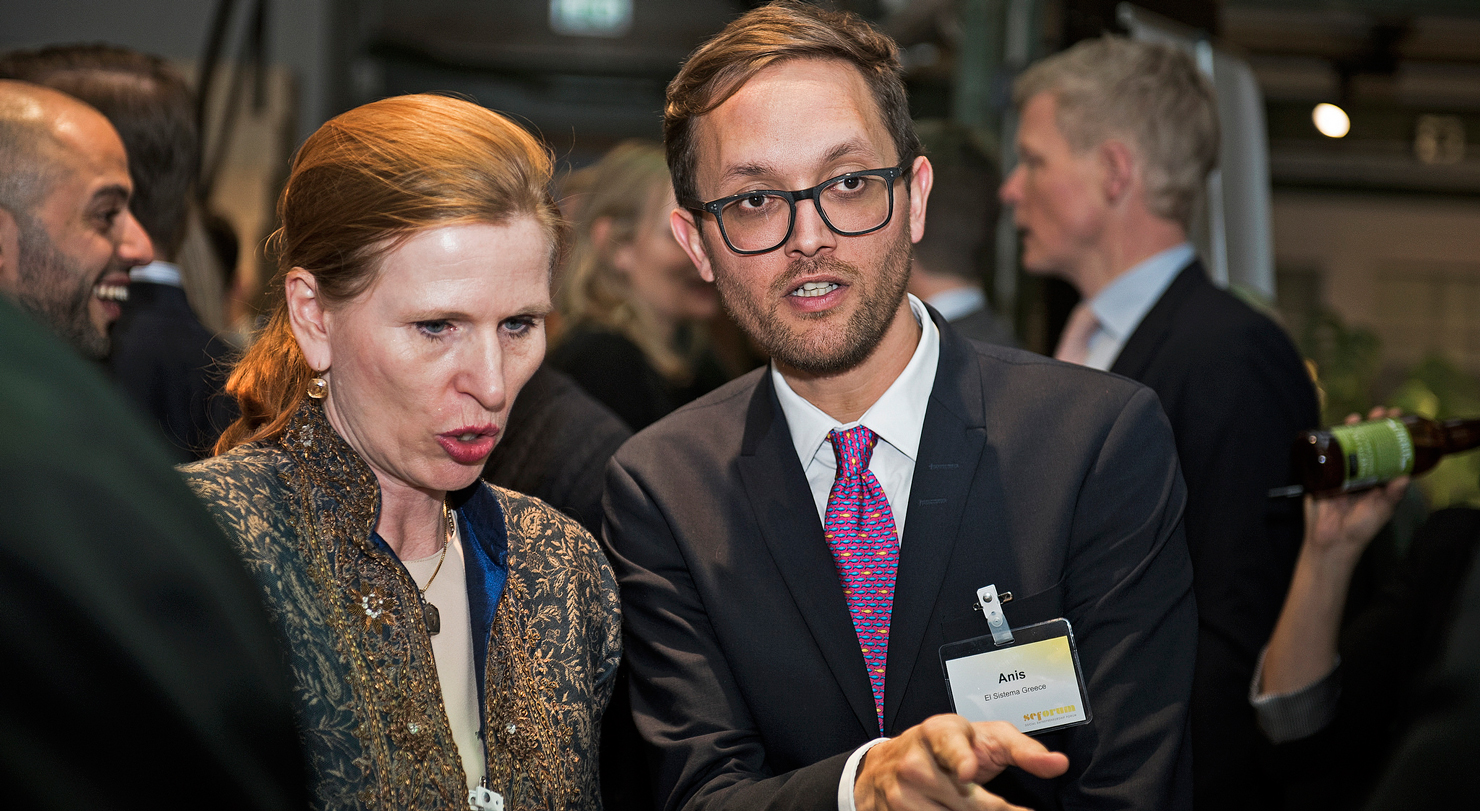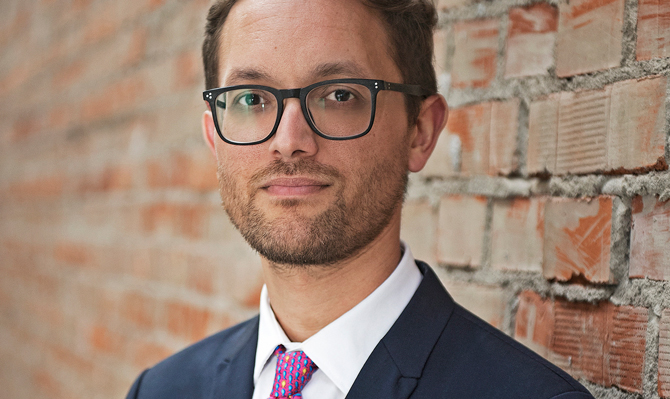With the first session of the 2018 Seeds of Peace Camp behind us, and the second session just beginning, now is the perfect time to reflect on the experiences of our 26th summer thus far. Below, we have compiled highlights from each day of our first session of Camp.
Day 1: June 28
OUR CAMPERS ARRIVE! Over the course of the day and through a thunderstorm, buses brought our new arrivals from Israel, Palestine, Jordan, Egypt, India, Pakistan, and the United States, with each welcoming party larger and more enthusiastic than the last.
Day 2: June 29
A restful day allowed campers’ biological clocks to adjust from their long journeys—some of which were more than 30 hours. The highlight of Day 2 were the attitudinal surveys on campers’ experiences of, and thoughts about, the “other side.” On the last day of Camp, we administer a second survey to see how these views deepened and changed over the course of Camp.
Day 3: June 30
This was the first “normal day” at Camp, when routines become solidified, and activities start in earnest. A heat wave also began, ushering in some of the hottest, muggiest weather we’ve ever experienced at Camp.
Day 4: July 1
Flagraising Ceremony! Local press, members of the Otisfield community, a representative of Maine Senator Susan Collins, and other Seeds of Peace supporters weathered the heat to hear the moving words of our returning campers—known as Paradigm Shifters or “PSs.” Seeds of Peace Executive Director Leslie Lewin, Camp Director Sarah Brajtbord, and Maine Program Director Tim Wilson also spoke at the ceremony.
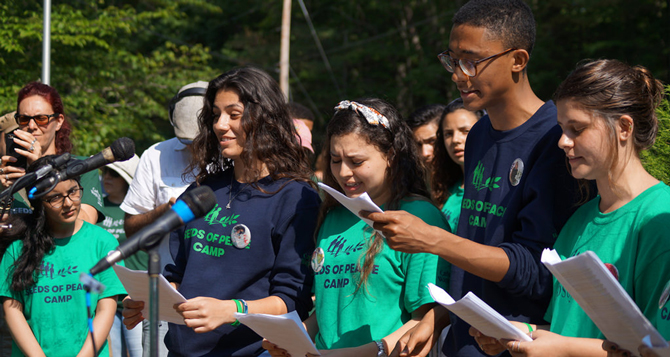
Day 5: July 2
The spotlight was on our Delegation Leaders (DLs)—educators and community leaders who are point-people to the parents and home communities of each camper in their delegation. As part of our Educators Program, the DLs go through the same dialogue process as our campers. To decompress and reflect after their recent dialogue sessions, the DLs visited Portland and saw the famous Portland Head Light!
Day 6: July 3
While this day was chock-full of activities, given that it was the fourth consecutive day of temperatures reaching above the 90°F, the highlight was definitely the extra hour of swim time the campers got.
Day 7: July 4
Our DLs and PSs were welcomed by our neighbors in Otisfield at their annual Fourth of July celebration. Like Flagraising, July 4th can bring up difficult questions among our campers and staff alike. But these important discussions didn’t stop us from having a great time or enjoying the support of the local community … and we also won first place for Best Parade!
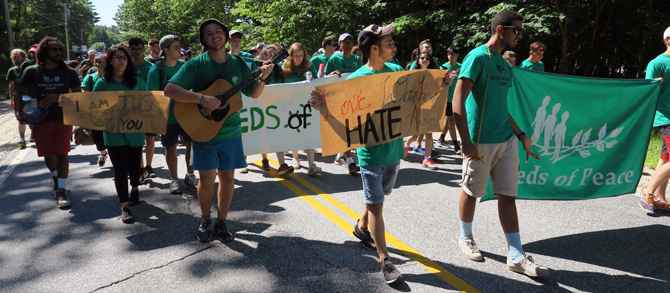
Day 8: July 5
The highlight was “The Mostest,” one of our most popular all-Camp events. Rather than celebrating being the “best” or “greatest” at something, The Mostest celebrates the act of committing to something the fullest. Another highlight: the end of the heatwave!
Day 9: July 6
While we host religious services regularly throughout Camp, this day we offered our campers the chance to observe Muslim and Jewish faith services. For many of them, this was their first opportunity to view the religious practices of people on the “other side.”
Day 10: July 7
INTERNATIONAL DAY! Campers got to celebrate their cultural identities and introduce them to each other. Campers wore traditional dress, while our DLs worked with the kitchen staff to prepare meals reflective of their homelands. Following dinner and a dance party, each delegation put on a performance to represent their own national or cultural tradition.
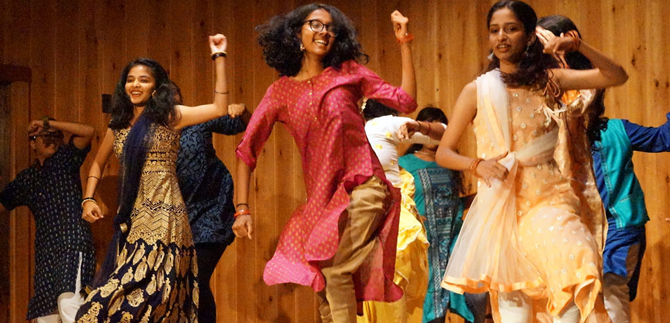
Day 11: July 8
Tim Wilson, Director of Maine Seeds Programs, visited again to share some inspiring words during line-up. Meanwhile, Group Challenge—which physicalizes and continues the campers’ work in dialogue—arrived at its final stage: the high ropes course! At night, there was a moving memorial service for the Seeds who have passed away, including four from 2018.
Day 12: July 9
Our DLs left Camp again, this time visiting our neighbors at Shoal Cove to learn more about their local Maine community. These generous Seeds of Peace supporters also took our DLs sailing on Winnegance Bay; for many of them, it was their first time on the water!
Day 13: July 10
The unofficial beginning of Camp’s second phase: as campers become more open and accustomed to each other, dialogue gets more heated. Every year, right around this time, the tension in the air becomes more palpable. All of which is to say that the process is working!
Day 14: July 11
Now two weeks into the Camp, we have entered what is arguably the most challenging, and rewarding, period of the process. The plethora of activities campers could engage in, be they on the field, in the art shack, or on the waterfront, went a long way to defuse the tension from dialogue.
Day 15: July 12
At night, we went to see the Portland Sea Dogs! The Campers barely paid attention through most of the baseball game (after all, they rarely get unstructured, Camp-wide free time—and never outside the campgrounds) but they still had a great time witnessing the Sea Dogs’ come-from-behind victory.
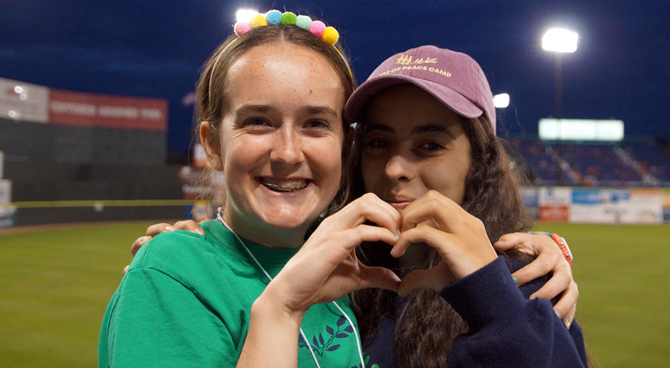
Day 16: July 13
Sports Day! We were joined by another Maine camp, which we played in soccer and basketball with our girls and boys teams. It was a fantastic opportunity for these young leaders to build relationships with people they never would have met before, and our campers made the most of this opportunity. Though the day was about sportsmanship, encouragement, and welcoming new people, it was a nice plus that we won all four games!
Day 17: July 14
The initial excitement of the night’s Talent Show tonight gave way to news from home. Campers from the Israeli and Palestinian Delegations were given time to meet alone. DLs, Camp staff, and our campers themselves rose to the occasion, providing an incredible support system for one another and showing solidarity. The Talent Show went on as planned, and featured amazing performances.
Day 18: July 15
Color Games, the final stretch of Camp, began. The next few days would see Campers divided into two teams—Green and Blue—whose identities transcend nationality or religion. The day’s competitions would leave the Green Team with an enormous lead.
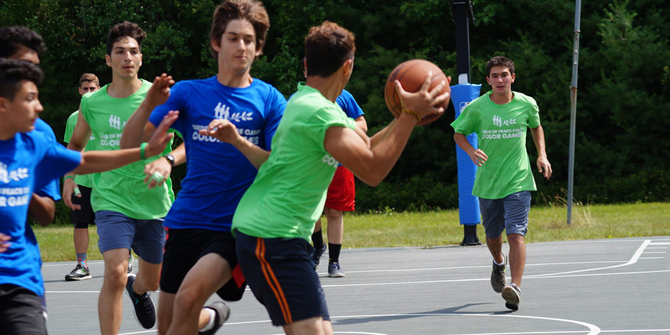
Day 19: July 16
Day two of Color Games! Over tasks ranging from sports activities to spoken word to music and dance to sketch comedy, Blue Team relentlessly chipped away at Green Team’s lead. By the day’s end, they were neck-and-neck with one another.
Day 20: July 17
The last day of Color Games consists of a relay race gauntlet known as “Message to Hajime.” Over 100 task stations were arranged throughout the campgrounds. Green Team ultimately prevailed, winning first session’s Color Games.
Day 21: July 18
A day of wrapping up. Campers had their last dialogue sessions, packed for their departures, and learned what year-round regional programs will await them back at home. In the middle of the night, the PSs left their mark on Camp, paiting these inspiring words over the boat shack: “They tried to bury us. They didn’t know we were seeds!”
Day 22: July 19
Departure Day is always bittersweet; feelings of accomplishment and fulfilment clash with flowing tears for leaving the community we created at Camp. The 187 young leaders—from now on officially “Seeds”—who arrived three weeks ago now know firsthand “the way life could be.” They will return home with the skills, wisdom, and courage to lead change in their communities.
We hope you enjoy our Camp roundup. Is there anything we missed, or anything you would like to hear more about? Let us know below!



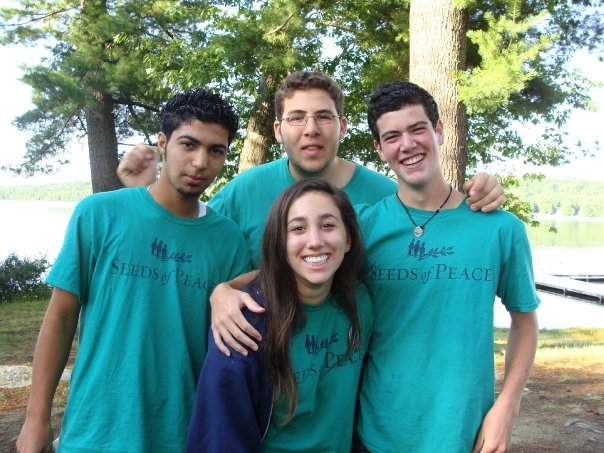
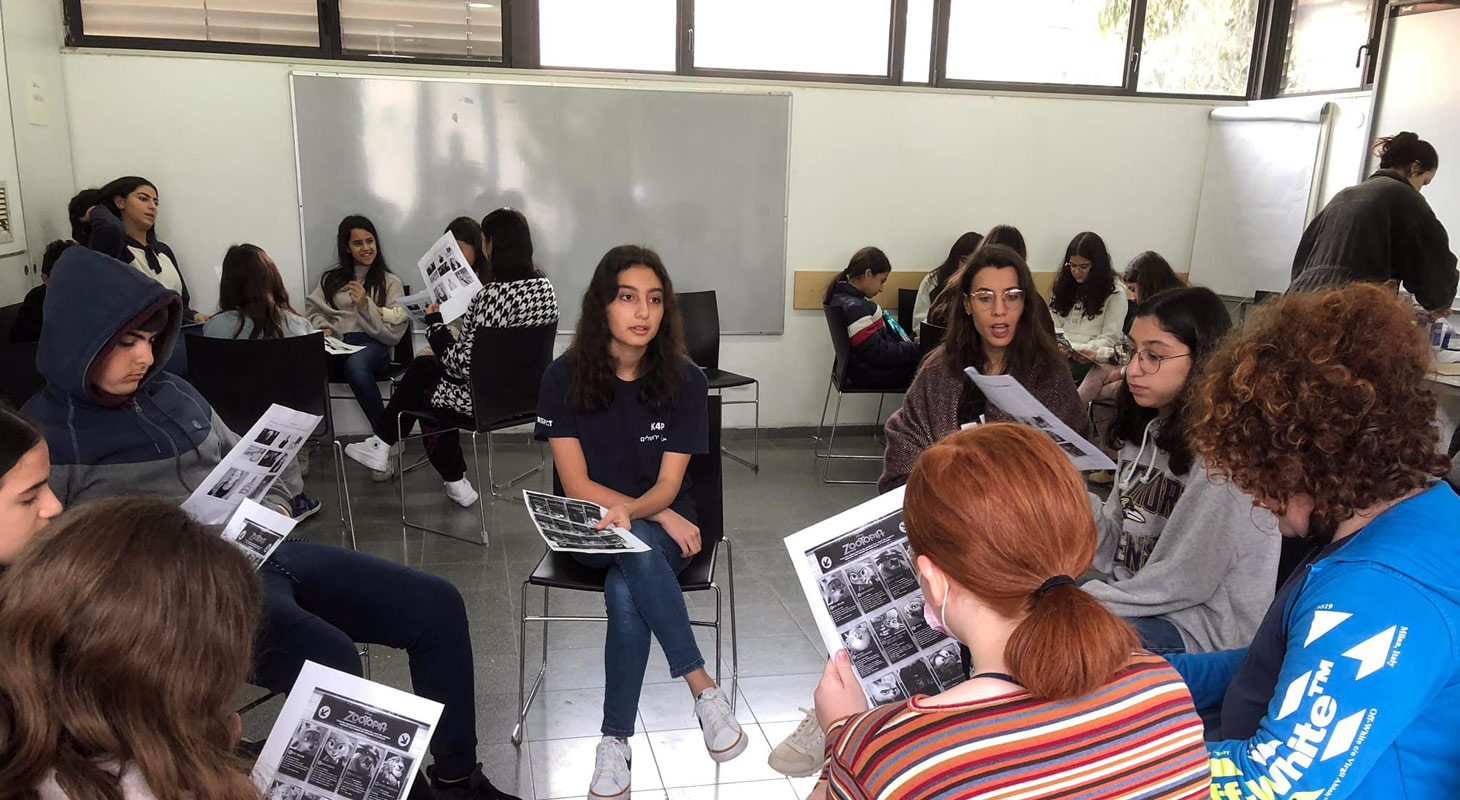
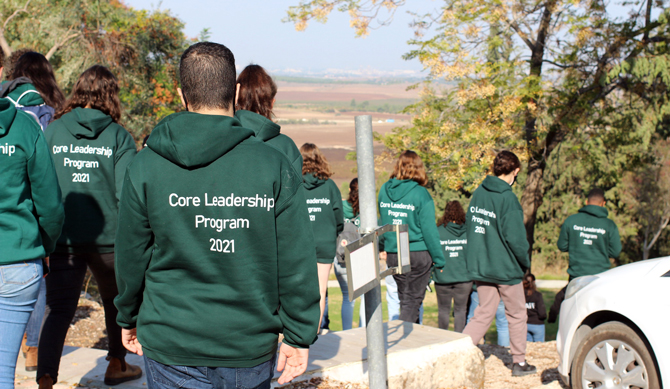
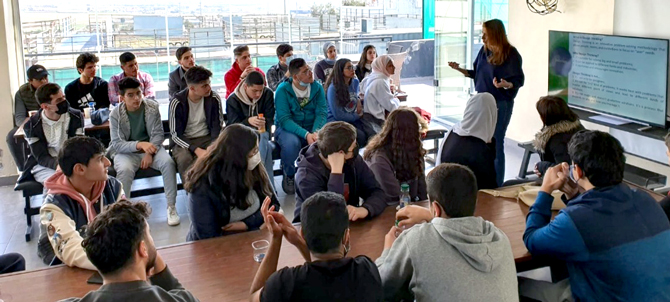
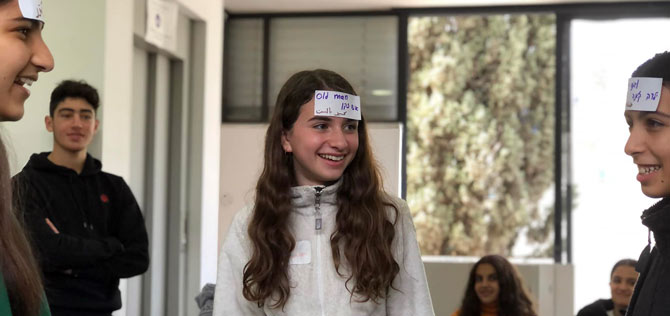
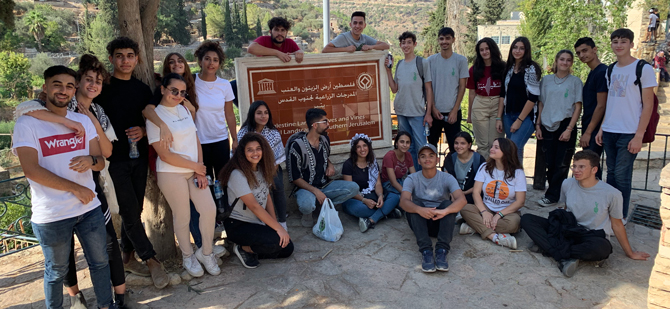

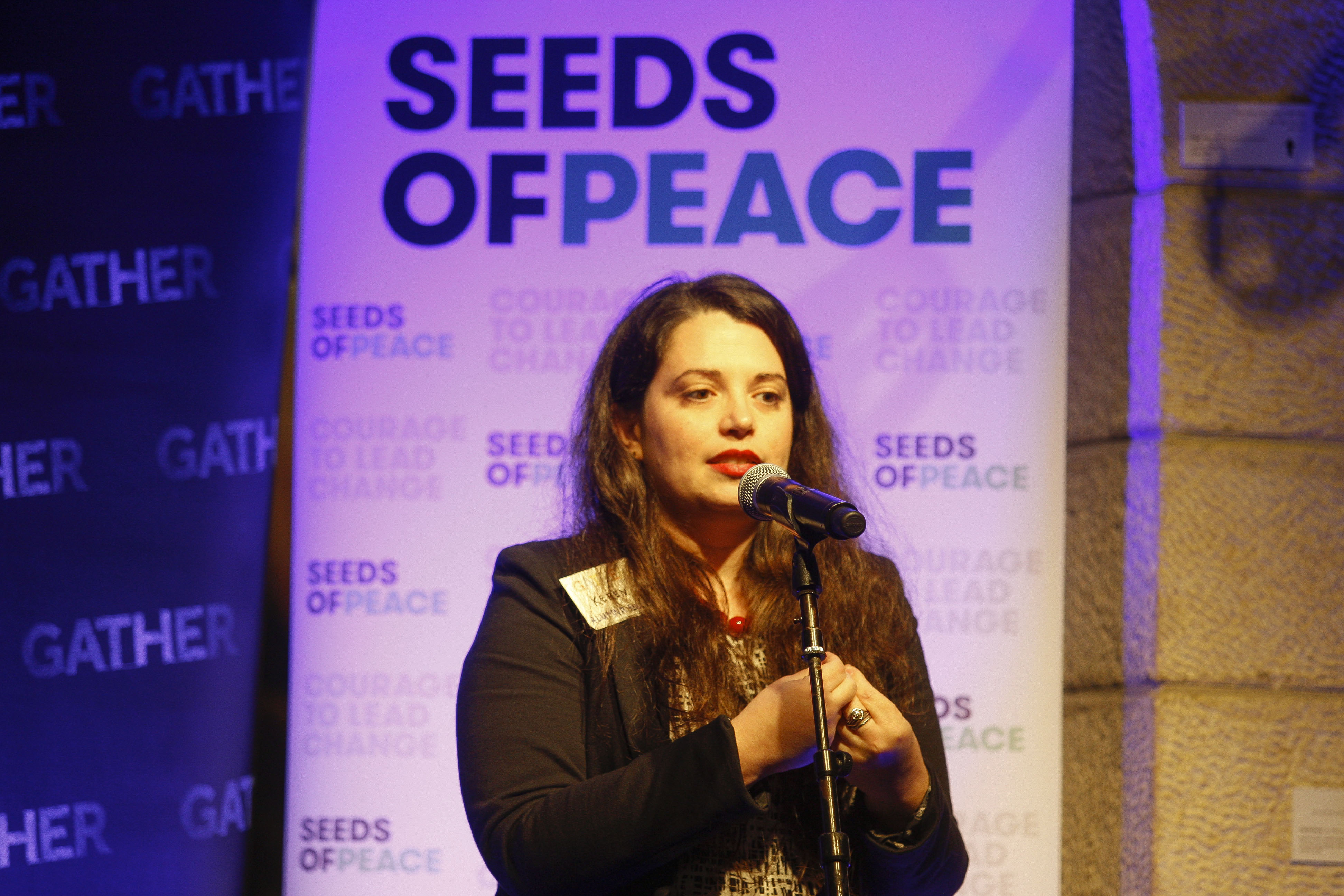
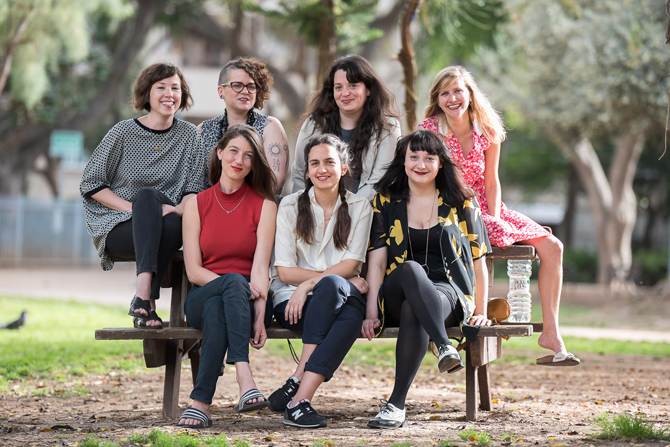 Keren with the other founders of Layla Tov (TimeOut Tel Aviv)
Keren with the other founders of Layla Tov (TimeOut Tel Aviv)